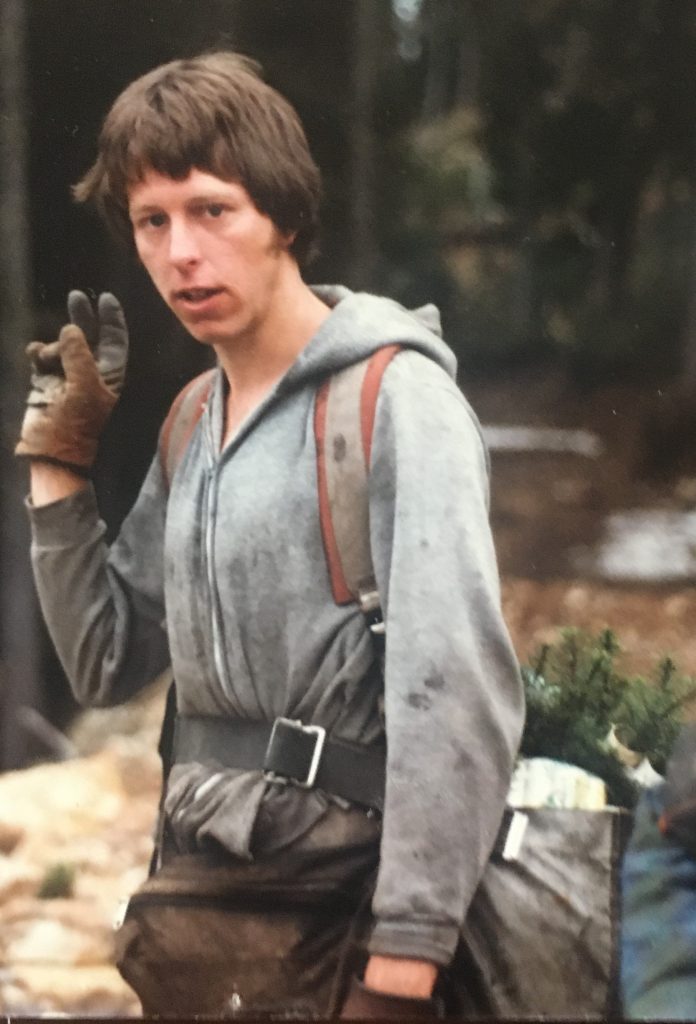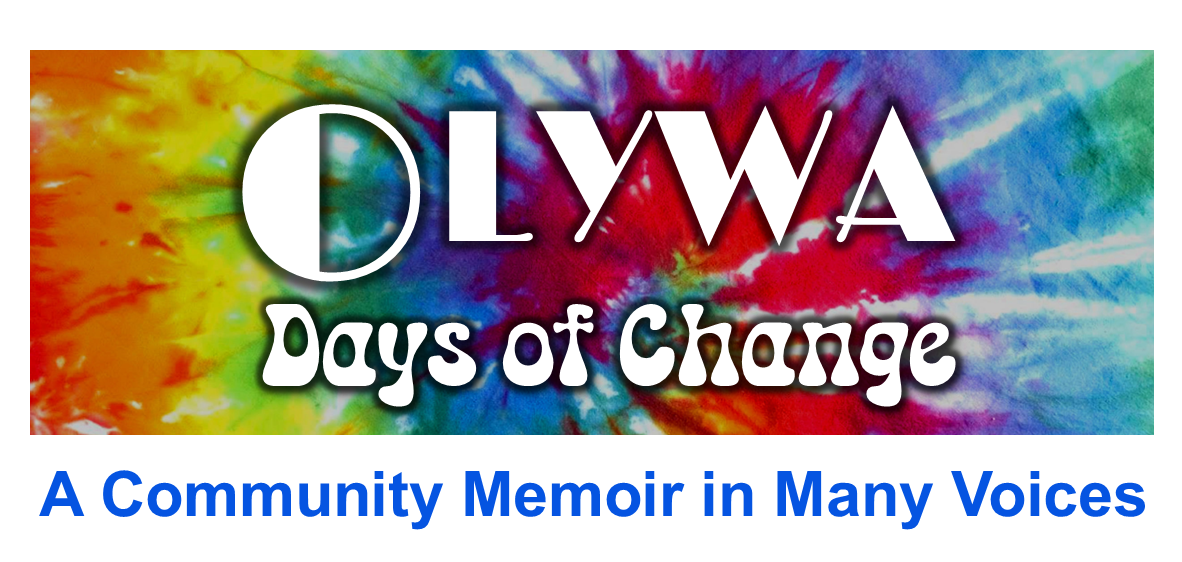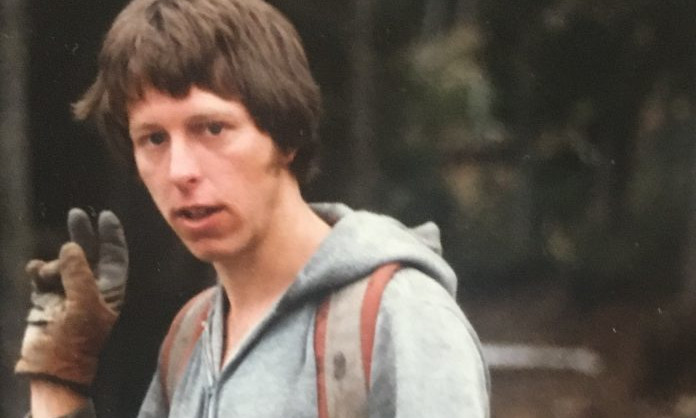TRIBUTES
Remembering Tom Nogler: Organizer, Activist, Brother
By Tim Nogler
.Reprinted from Works in Progress, March 1, 2020, Volume 34, No. 8
Spring brings a new beginning with freshness in the air and increasing light each day. It’s a time of optimism and energy. This January, our community lost a man who embodied that optimism and energy.
Thomas Wilson Nogler passed away while helping a friend clear brush. Tom was known to family and multitudes of friends as an involved, educated, tireless pillar of the radical progressive community. He was a constant figure on the streets and in meeting rooms, from City Hall to the Artesian Well at the Cop Watch station and on picket lines. Tom was at his best canvassing neighborhoods, going door to door and working telephone lines. Many in Thurston and Lewis counties also knew him for his recent role in organizing mental health workers and advocating for prevention of child abuse.

Tom’s activism had a long history
Tom’s sense of humor and organizing skills showed up early at WF West High School in Chehalis when he arranged a fund-raising dance marathon and a baseball game between the Pigs (police department) and the Freaks (Tom’s friends and relatives). Even as Student Body President in senior year (1970-71) Tom was out in the open with his radical ideas. When an Elma High school student sent a letter complaining about WF West students’ poor behavior at a ball game, Tom sent this reply to Elma High School:
My humblest apologies for the actions of members of our student body at the game on Friday night. Unfortunately many of [them] have no realization of the Revolution yet, although as soon as they do, I’m sure our basketball games will be more peaceable.
Love is coming.
A political philosophy formed in the woods
In the winter of 1971, Tom arranged work with a contractor to plant trees for Weyerhaeuser. Tree planting is considered by employment experts “the hardest physical labor known . . . one person in fifty succeeds the three-week training period.” For me it was miserable. For Tom it was an adventure. It also offered a lesson for a developing radical: On the final day of the contract, we met the crummy (crew truck) at the cottages where the migrant workers stayed. We saw a sheriff’s car parked by the cottages, and realized that, now that the contract was nearly finished, our co-workers were being loaded on the bus to be deported.
Beginning in the 1930s, a federal government policy called for reforestation plans. In defiance of the policy, timber companies cut and ran. In 1945 in Washington state, Governor Wallgren directed the state forester to formulate a law requiring replanting of clear cuts. The Forest Practices Act was passed, but timber companies still largely refused to comply. Finally in 1974 the Act was revised and rules were adopted creating an enforcement mechanism that would force timber companies to plant trees.
The new rules created a demand for cheap labor to plant millions of trees. The standard practice of hiring migrant labor evolved into the local labor pool. The timber companies contracted work to the lowest bidder, and more local workers signed on. Work was plentiful as Oregon had a law similar to Washington’s Forest Practices Act requiring logging sites to be replanted.
Working cooperatively in a time of social ferment
After working for a season with a contractor, some tree planters in the early 70s saw the opportunity to organize their own work crews. In Eugene, Oregon, the Hoedads incorporated as a cooperative and encouraged others to adopt the model to bid for contracts. Worker co-ops made sense for tree planting contracts, with low overhead and assets, and the need for large crews. Members were organized by crew, each with a colorful name like Natural Wonders, Thumbs, Cougar Mountain. Other groups formed throughout the region including Marmots in Seattle and Bellingham, a woman-owned business.
The 70s was a time of turbulent social action, with the anti- war and other movements. The working conditions were primitive, but inspired many, drawn by nature, wilderness, ecology, restoration, and encouraged self- sufficiency, stewardship and group dynamics. It also provided fertile ground for exercising alternative and experimental modes of living.
In 1975, Tom and I called a meeting at one of the food conspiracy houses near The Evergreen State College (TESC), Suburbia in the Woods. We had a contract with Weyerhaeuser to plant trees and needed workers. We had a 1953 one-ton Chevy flatbed truck with a plywood canopy and tools, hoedags and tree bags. (A hoedag, or hoedad, is a long curved hoe blade mounted on an ax handle.) We formed Nogler Tree Farm (NTF).
Not a hierarchy but a circle
To bid contracts and obtain work we had to be incorporated, either as a sole ownership or a partnership. There was not an option to be a collective. When we were low bidders on a contract to plant trees at Fort Lewis, we arrived at the site to meet with the foresters. They had a lot of trees to plant and were anxious for us to start. They said “be sure you have your paperwork in order.” When we met with the contracting officer, Major Barbara we called her, the jig was up.
She sent us to the Small Business Administration in Seattle. The federal employee there explained in good faith about bookkeeping; how to run a business. They showed us an organizational chart with a box at the top of the page and lines connecting to a row of three boxes and then a row of six boxes and so on. One of our group stood up at the chalkboard and drew our crew: a circle of boxes connected together. They sent us away saying “Even in communist China there are bosses!”
The NTF crew was mostly college-educated idealists, with a goal to restore the natural environment and exercise principles of an egalitarian collective. We were not able to pay a family living wage so in order to survive, we camped close to planting sites, sometimes sleeping in the back of the crummy.
Organizing for collective benefit
Tom had a vision that the group could work together to do more than plant a lot of trees to make some money. Instead, he wanted to exercise principles of a worker-organized economy. He had a much larger idea: revolution. He liked to quote great revolutionaries like Marx: “From each according to their ability, to each according to their need.”
The tree planting collectives diversified to bid work other than tree planting, including cone picking and trail building, and manual removal of milfoil. Tom was part of forming a worker’s union, the Northwest Forest Workers Association. NWFA brought together workers from throughout the region as far away as Northern California, Oregon, Washington and Idaho. Among other issues, NWFA helped fight against the use of pesticides and herbicides, a previously standard forestry practice.
A life devoted to social and political justice
After the adventures in tree planting as part of a collective, Tom continued in his passion for organized labor and challenging the status quo. He was a national and international leader on the issue of men’s role in prevention of child abuse. He was actively engaged as a member of the Child Abuse Prevention Council.
Tom’s belief in working for the common good extended to public ownership of utilities: A privately owned corporation should not control a public resource. He began working in the early 1990s on campaigns to create a Public Utility District (PUD) in Thurston County. Tom was instrumental in getting a public power initiative on the ballot in 2012, collecting signatures and coordinating fundraisers. The initiative failed by a narrow margin so Tom persevered, lately working on an initiative to bring public power to the city of Olympia. Another group, inspired by Tom, is pursuing a new effort to create a Thurston Co. PUD. His efforts helped bring Dennis Kucinich to Olympia to support that initiative.
Still a Wobbly, still connected to the forest
Our last woodworking operation was on Ham Hill in Centralia, where our father planted 50 black walnut trees in the 1980s. This past November, Tom and I travelled together to Centralia to attend an IWW commemoration of the 100th anniversary of a violent confrontation between Wobblies and members of the American Legion. Tom, a card-carrying Wobbly, was actively engaged in discussion in the room crowded with Wobblies, still debating what actually happened that day 100 years ago.
After the meeting we drove up the hill to the orchard and cut down a black walnut tree to transport to Olympia in the back of Tom’s Toyota pickup, where he planned to mill it into boards. I hope to put those boards to use.
Tim Nogler is retired from the state and lives on Olympia’s Westside where he plants trees among other pursuits.
We encourage readers to contact us with comments and corrections. Disclaimer

